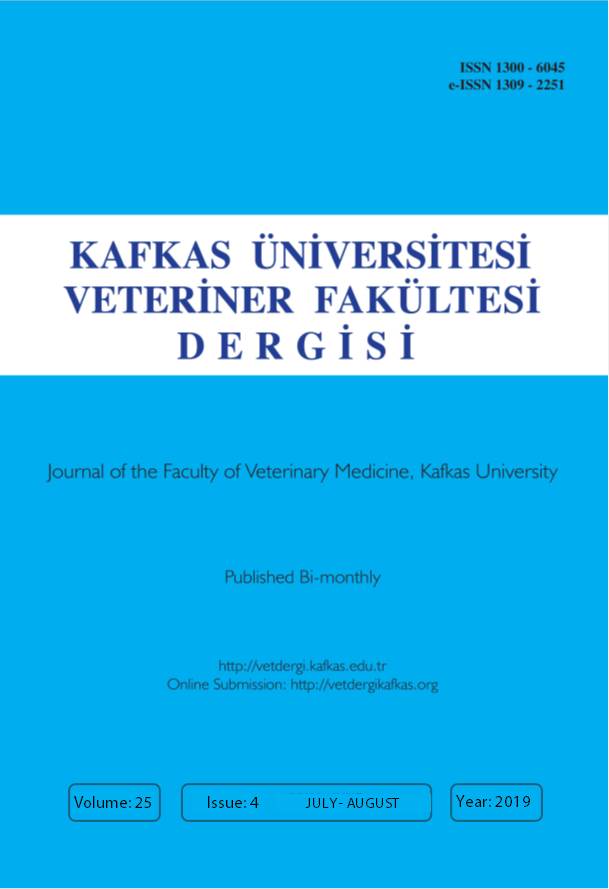
This journal is licensed under a Creative Commons Attribution-NonCommercial 4.0 International License
Kafkas Üniversitesi Veteriner Fakültesi Dergisi
2019 , Vol 25 , Issue 4
The Ability of Electrolyzed Reduced Water to Act as an Antioxidant and Anti-Inflammatory Agent in Chronic Periodontitis Wistar Rats (Rattus novergicus)
1Oral Biology Department, Faculty of Dental Medicine, Universitas Airlangga, Oral Biology, Surabaya, INDONESIA2Dental Public Health, Fculty of Dental Medicine, Universitas Airlangga, Public Health, Surabaya, INDONESIA
3Faculty of Dental Medicine, Universitas Airlangga, Surabaya, INDONESIA
4Orthodontics Department, Faculty of Dental Medicine, Universitas Airlangga, Ortodontics, Surabaya, INDONESIA DOI : 10.9775/kvfd.2018.21284 The chronic periodontitis was inflammation characterized by macrophage activation which releases various metabolites such as ROS that, in turn, produces malondialdehida (MDA) a biological biomarker of lipid peroxidation. The aim of this research is to analyze the effect of Electrolyzed Reduced Water (ERW) on the levels of malondialdehyde, macrophage and lymphocytes cells in Wistar rats suffering from chronic periodontitis. It constitutes an experimental laboratory study incorporating a random sampling method. Twenty-one Wistar rats were induced with up to 106 Porphyromonas gingivalis in the proximal area of the mandibular molar and divided into three groups which were administered orally on a daily basis as follows: a control negative group (distilled water); a control positive group (a dose of vitamin C at 1.08 mg/200 g Body Weight/day) and a treatment group (20 mL ERW) and observed between Day 1 and Day 14. Samples of gingival tissue were taken from the subjects for analysis with malondialdehyde and the conducting of macrophage and lymphocyte cell counts on Day 14. Data analysis comprised a One-Way Analysis of Variance (ANOVA) and a Mann Whitney test (P<0.05) based on a Saphiro-Wilk normality test and a Levene Test for Equality of Variances or a Kruskal Wallis test (P>0.05). ERW can decrease the level of malondialdehyde (4.3±0.7), the number of macrophage cells (19.4±8.6) and the number of lymphocyte cells (8.5±0.8) in the treatment group. The ERW mechanism can, therefore, be said to suppress the occurrence of further tissue damage triggered reactive oxygen species (ROS) in Chronic Periodontitis. Keywords : Anti-inflammatory, Reactive oxygen species, Electrolyzed reduced water, Malondialdehyde, Periodontitis










